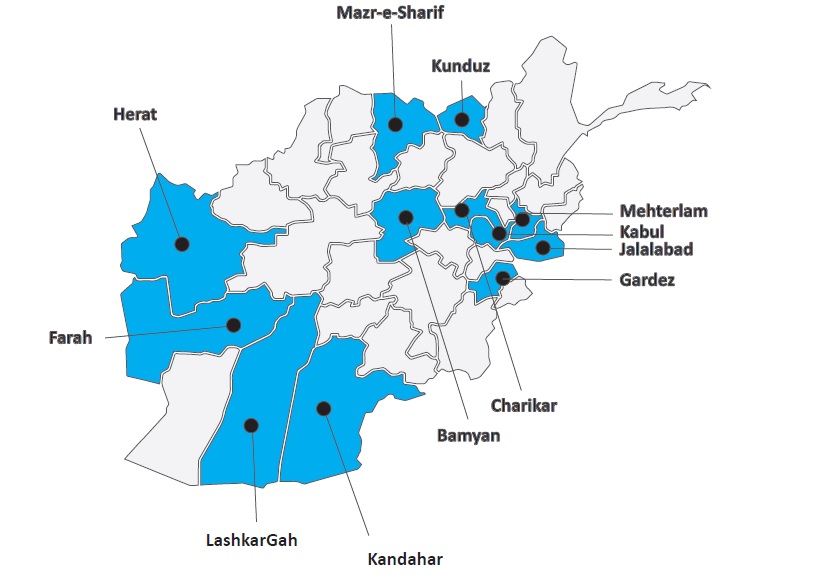Clean and Green Cities (CGC)
Funding from USAID (8.3m $), European Union (2.6m $) 
Total Budget 10.9m US$
Duration 2017-2018
Implemented by UN-Habitat
Gov. Partners MUDH, KM, IDLG/DMM
Afghanistan is at a critical juncture. The ‘triple transition’ of political, security and economic transitions from late 2014 and 2015 is being felt even more strongly in 2016. Citizens are frustrated and losing hope. Unemployment has reached unprecedented levels. Every day hundreds of Afghans are migrating outside the country. Urban food insecurity is rising. Urban households are struggling to make ends meet, which is mostly affecting women and girls. The challenges of urban poverty, unemployment, and socio-economic marginalization are getting worse due to the international drawdown and economic slowdown. Urban poor households, IDPs, and female headed households are, and will continue to be most affected from these macro-economic changes.
In response, in late 2015 the National Unity Government (NUG) unveiled a ‘Jobs for Peace’ initiative. This ambitious initiative identified several opportunities to improve the economic stability, harness excess labor, and strengthen government capacity and legitimacy. The initiative identified major Afghan cities as key hubs in need of stabilization and job creation, which could ensure the poorest and most vulnerable could benefit from economic stimulus to maintain social gains made over the past decade.
‘Clean and Green Cities’ (CGC) will invest in labor intensive urban clean-up, repair, beautification, and basic solid-waste management activities. The expected impacts are: (i) improve well-being of citizens and urban environmental quality, (ii) increased trust between citizens and municipalities and strengthened government legitimacy, and (iii) augmented economic and labor stimulus to the poorest households which will have multiplier effects on the urban economy, (iv) Increased private sector confidence and investment for job creation.
The CGC project is mostly aligned with the target of SDG 8.5 (achieve full and productive employment and decent work for all women and men, including for young people and persons with disabilities, and equal pay for work of equal value). 11.6 (reduce the environmental impact of the cities). 6.2.1 (Safely managed sanitation and hygiene services). 6.b.1 (Participation of local communities in water and sanitation management).
MAIN FIGURES/ACHIEVEMENTS
36 Parks Rehabilitated.
1.5 million job days created.
450,922 trees planted.
79 Nahia Development Committees established
135 Community Development Councils established
490 Skilled and 10.990 unskilled labor hired for a period of 12 months.
